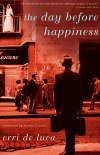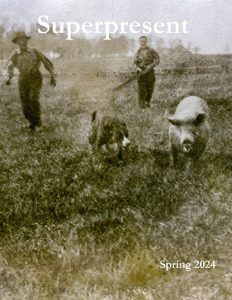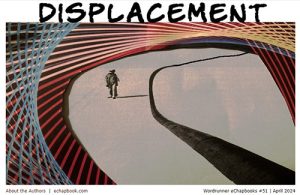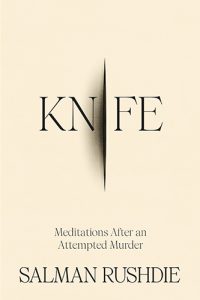The Day Before Happiness
Erri de Luca’s The Day Before Happiness, a bildungsroman set in Naples after WWII, shows both memories of the war and the city at that time, focusing on characters in an apartment complex. It also offers poetic insights along with humor. The lyrical style ultimately doesn’t distinguish the two main characters, even though one is a boy and one his caretaker/mentor, but the humor does distinguish another character in his nouveau riche ignorance.
Erri de Luca’s The Day Before Happiness, a bildungsroman set in Naples after WWII, shows both memories of the war and the city at that time, focusing on characters in an apartment complex. It also offers poetic insights along with humor. The lyrical style ultimately doesn’t distinguish the two main characters, even though one is a boy and one his caretaker/mentor, but the humor does distinguish another character in his nouveau riche ignorance.
Our narrator is an unnamed orphan (only referred to as guaglio, short and generic for boy/young man) whose education in this book ends when he is eighteen. He lives at the lower level of an apartment complex with the building’s portiere/doorman/caretaker, Don Gaetano. Since education is free for everyone, even the poorest, the studious boy learns Greek, Latin and the process of Italian unification. From Gaetano he learns the man’s experience in the Four Days of Naples, the popular uprising of September 27-30, 1943. We see why the Italians to this day don’t warm up to the Germans: the Germans were ruthless in their retreat just before the Americans entered the city by the sea. Gaetano also teaches the boy to play a card game called scopa or “sweep,” which is “a fight between order and chaos,” like life itself.
While playing a ball game, the boy discovers a trapdoor, one of the building’s secrets, an underground hiding place where Gaetano once hid a Jew during the war, a place also useful to the boy later. He is a contortionist, winning a chance to play with his contemporaries by being able to squeeze into narrow places. At the same time he is also trying to catch the eye of a girl behind a balcony window. She never comes out, but he never forgets her even after she leaves the apartment building. “Out of that whole childhood, the missing thing I chose was the girl in the window. When she disappeared, life shrank to little cages. I had to live without the freedom of lifting my eyes.”
The boy learns Gaetano’s electrical and other fix-it skills, becoming useful to the apartment dwellers even beyond these abilities, and learns about his surroundings by climbing Vesuvius and fishing off Ischia. Ultimately this orphan learns the possessive “mine”: Instead of being “a fragment” of the building, he learns of his parents and ironically follows the path of one of them. The conflict comes with the consequences of his reunion with the girl. He must also belong to Naples, and ultimately he must learn to fight like a true Neapolitan.
The boy opens up to the apartment dwellers, their fights called “paste-ups” from their living one on top of the other. One dweller cannot be laughed at, though he provides most of the book’s humor: he is an uneducated gangster, full of malapropisms, like confusing “mastiffs” and “martyrs.”
Most of the learning comes from Gaetano and his war experience, his compassion, but the author also includes interesting facts about Naples, such as that buildings are made of tufo or soft volcanic rock and that originally, “Naples is Spanish, it’s in Italy by mistake.”
Gaetano, who can hear other people’s thoughts, offers the most poetic insights:
Any moment is right to do something good, but to do something evil takes opportunity, convenience. War is the best opportunity to do rotten things. It grants permission. To do a good deed requires no permission.
. . .
First of all, don’t call them people. They’re persons, each and every one. If you call them people, you lose sight of the person.
Gaetano also teaches about being an orphan (since he was one himself); about what it’s like to be part of a revolt; about the city at night, when no explanations are necessary and it is a “civil place”; and ultimately how “happiness is truth and its price blood.”
The book’s title comes from the Jew Gaetano sheltered: At the Jewish New Year in September a stone is cast in the water, a gesture to be delivered from sin. As the Jew explains: “The year for us begins tomorrow. Ours would have it that today is the day before happiness.” You have to do something on that day before because “freedom has to be earned and defended. Not happiness, which is a gift.”
Gaetano finally acknowledges, “I have to teach you, then lose you.” Then for the eighteen-year-old boy, history becomes his “inheritance.” As he puts it, Gaetano’s stories “became my memories.”
The reader can find much to enjoy in The Day Before Happiness: the author’s lyrical style as truths are transferred from mentor to student, the picture of the Italian struggle and Naples at that time, and the humor, including the Italian perspective on Americans during the war.





